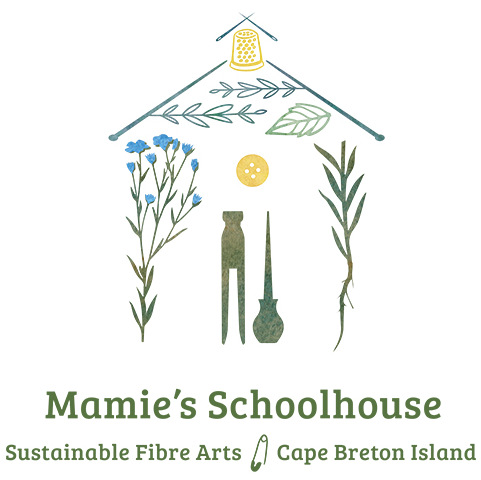Tonya Pettit
new york, usa
Stockholm 100: Another (Process)
To dye with mulberries. Take and crush unripe bunches of grapes and mordant the wool therein for 3 days. On the fourth day put this grape juice in another pot and boil the wool therein, but when it boils lift it out, rinse it with water and let it become cold. Then take juice of mulberries and boil up until it boils twice. Put the wool in and let it become cold therein and it will be a fine excellent purple.
introduction:
Mulberries are a deeply colorful fruit that stain the fingers when picked. Wild fox grapes are unripe when the Mulberries are in season in our region of New York, USA. My homeschool student and I wanted to know if the two ingredients of this recipe could be sourced in the same season by the modern dye artist, and if the unripe green grape "mordant" could make a purple that could compare with wool dyed with Murex snail glands. It was determined that we would break the recipe into two parts, testing the unripe green grapes in part one, and the Mulberries in part two. We identified that variables of fiber and mordant, temperature, and solutions could be tested to show potential pathways for final tests. Results led us to repeat testing the following year adding the variable of bronze and tin.
Part one: unripe green fox grape bunches were crushed to yield 4 tablespoons of undiluted green grape juice. This juice was added to wool roving and homespun wool in a glass jar and designated Ggm1. The remaining crushed unripe green grapes were added to water and homespun wool was added and designated Ggm2.
Part two: Mulberries that had been frozen whole after picking were thawed, and the strained juice designated as control 1 for temperature variables. The remaining Mulberries and juice were divided among five jars testing juice vs fruit in water , and heated in the sun or crock pot for two heating cycles representing the recipe instructions to boil twice.
From the visual examination variables were identified to test the Ggm1 and Ggm2., and natural homespun wool was added to all 6 variables. The solar jars were left in the sun for two days due to weather changes, and the jars in the crockpot were brought up to temperature on low in two hours and left to cool overnight. After these tests juices 3,4,5,6 were combined and citric acid and cream of tarter was added to interpret the recipe for the modern dye artist. The jar was heated in the sun for two days to represent two heat cycles. Then Natural homespun and mordant testers were added to control 1 along with Ggm1 roving. In the jar juice 2 mordant testers and Ggm1 homespun was added. In the juice interpretation 1 jar, mordant testers and natural homespun was added. All three jars were heated in the crockpot on low for two hours to bring them up to temperature, and then left to cool overnight. Part one was retested in the following year. Wool was soaked in glass jars containing each variable for three days, then the entire contents were removed and heated to a simmer. The wool was removed at temperature, rinsed in rain water and set aside to dry. Part two was then retested. Frozen Mulberries were slightly covered with rain water and gently warmed in a jar in a water bath 30 minutes until they could be crushed. The berries were then strained and the juice portioned to be heated again to 110F . The yarns from part one were introduced and allowed to cool. A final modern interpretation was then tested. The seeds and skins were returned to the jar, Rain water was added to double the volume, and alum, tin and cream of tarter were stirred in. The jar was heated to dissolve the mordants, and then the yarn was added. Heat was increased to med for one hr. The yarn was allowed to cool then removed and rinsed. The second day a second bath was attempted, following the same steps of heating , cooling and rinsing.
Blog Posts:






